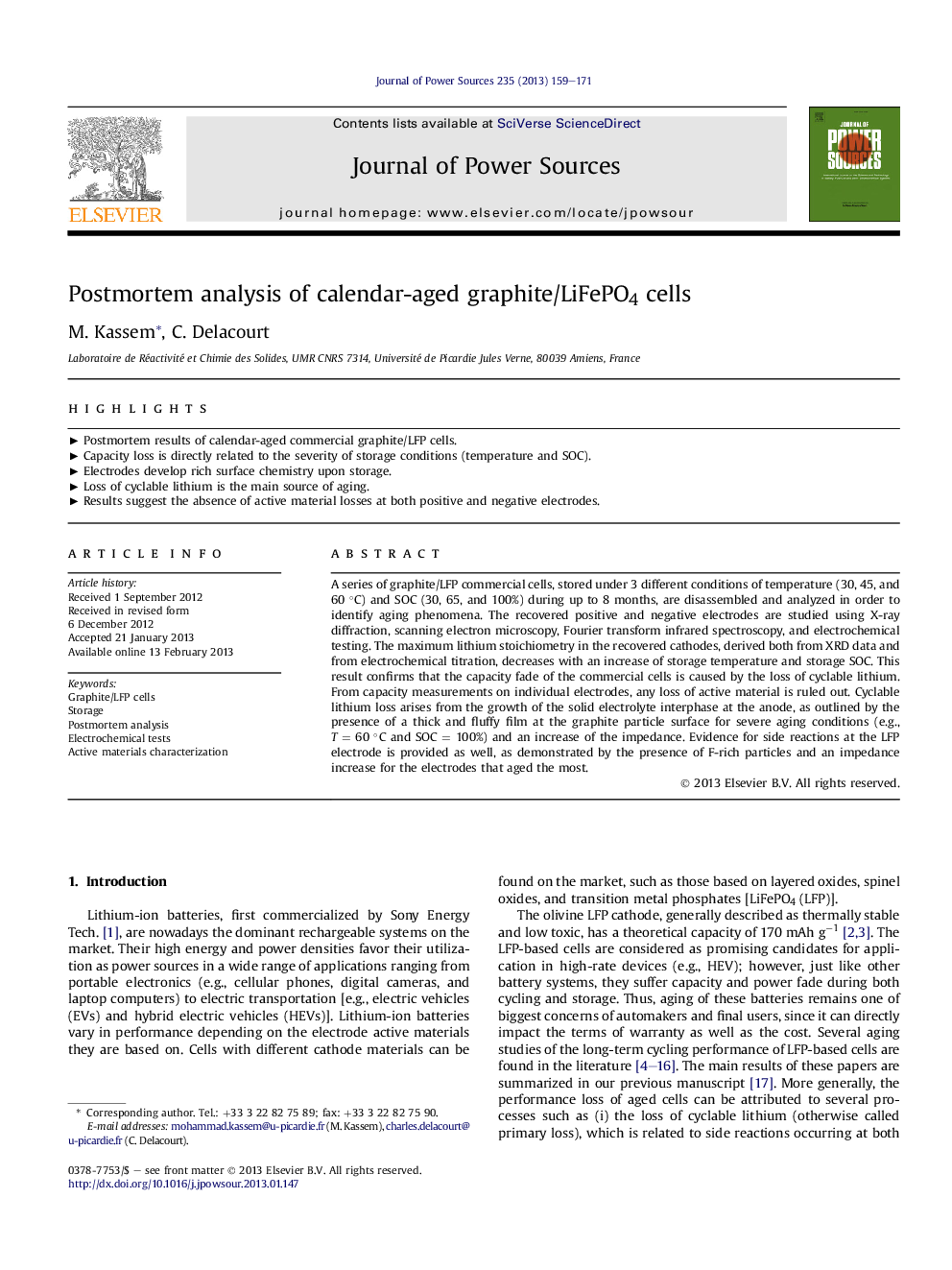| Article ID | Journal | Published Year | Pages | File Type |
|---|---|---|---|---|
| 1287854 | Journal of Power Sources | 2013 | 13 Pages |
A series of graphite/LFP commercial cells, stored under 3 different conditions of temperature (30, 45, and 60 °C) and SOC (30, 65, and 100%) during up to 8 months, are disassembled and analyzed in order to identify aging phenomena. The recovered positive and negative electrodes are studied using X-ray diffraction, scanning electron microscopy, Fourier transform infrared spectroscopy, and electrochemical testing. The maximum lithium stoichiometry in the recovered cathodes, derived both from XRD data and from electrochemical titration, decreases with an increase of storage temperature and storage SOC. This result confirms that the capacity fade of the commercial cells is caused by the loss of cyclable lithium. From capacity measurements on individual electrodes, any loss of active material is ruled out. Cyclable lithium loss arises from the growth of the solid electrolyte interphase at the anode, as outlined by the presence of a thick and fluffy film at the graphite particle surface for severe aging conditions (e.g., T = 60 °C and SOC = 100%) and an increase of the impedance. Evidence for side reactions at the LFP electrode is provided as well, as demonstrated by the presence of F-rich particles and an impedance increase for the electrodes that aged the most.
► Postmortem results of calendar-aged commercial graphite/LFP cells. ► Capacity loss is directly related to the severity of storage conditions (temperature and SOC). ► Electrodes develop rich surface chemistry upon storage. ► Loss of cyclable lithium is the main source of aging. ► Results suggest the absence of active material losses at both positive and negative electrodes.
